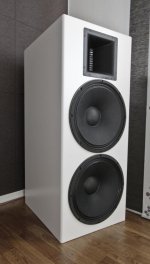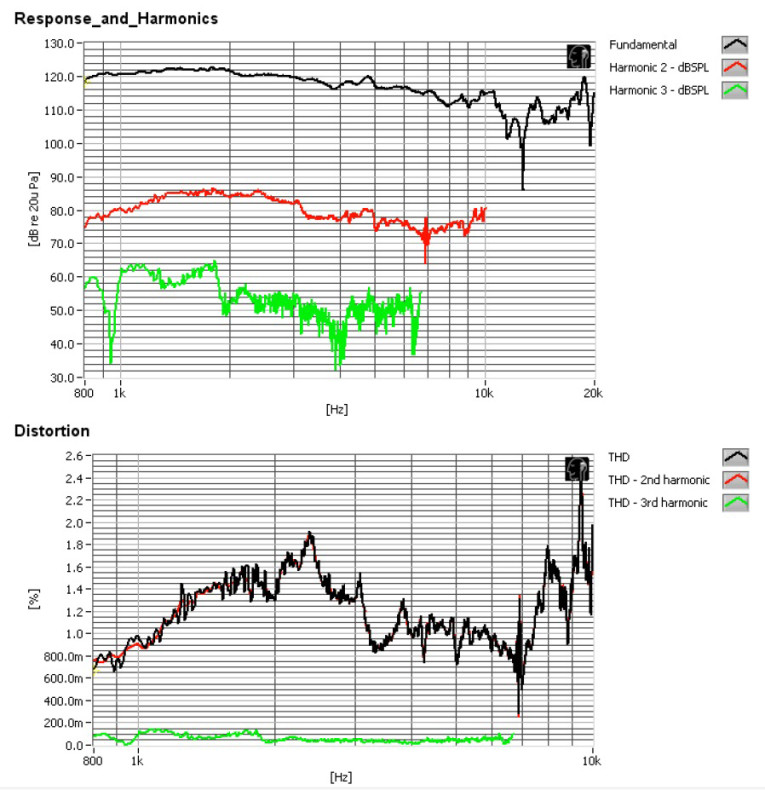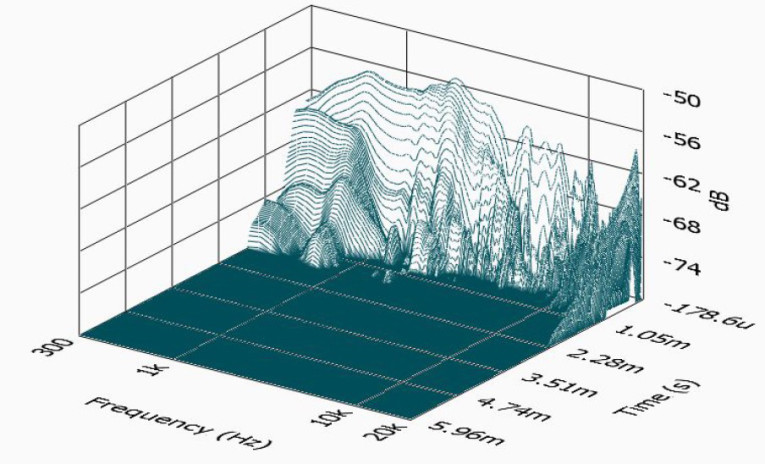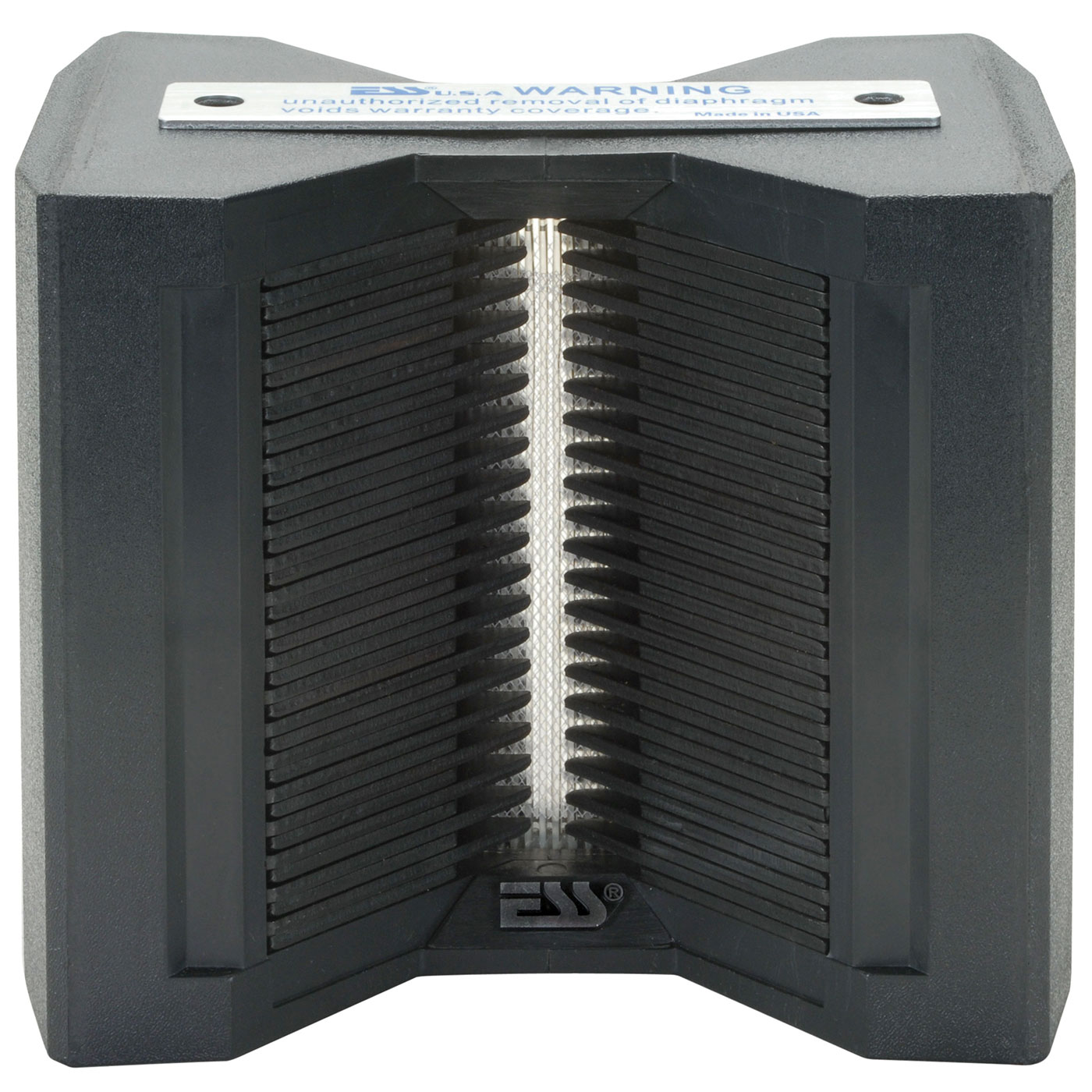Charles, would you mind refreshing me on what you're using for the M's please? I may have a similar project in mind.I use the combination HF146 (without extension "R" however) and XT1464 on a large MTM.
Hi Brett
My "M's" are Beyma 15LX60v2. I have chosen them because they can be tuned quite low and they don't cost an arm and a leg on this side of the pond. Another Beyma that is sometimes used for such purposes is the SM 115.
Regards
Charles
My "M's" are Beyma 15LX60v2. I have chosen them because they can be tuned quite low and they don't cost an arm and a leg on this side of the pond. Another Beyma that is sometimes used for such purposes is the SM 115.
Regards
Charles
Last year, Beyma launched a budget 15" midwoofer, the 15CMV2.
In Spain, it was initially available for only € 69.
Evidently, T&S Parameters are not as nice as the SM115, the 15PR400 and TD15M.

In Spain, it was initially available for only € 69.
Evidently, T&S Parameters are not as nice as the SM115, the 15PR400 and TD15M.

Last edited:
Yes, I cross it at 650 Hz. But I must say that I don't listen too loud on average. When I really crank it during my "insane phases" the lowest LED on my HF power amp blinks once in a while - meaning 4 Watts peak into 8 Ohms. Faital specifies that driver for 40 W AES and 80 W Peak @ 650 Hz crossover (half of what is specified for 900 Hz xover). So it is still almost idling in this situation.
Just curious if you have tried to cross any lower still? Seems like if it handles 40w at 650, it might handle 4 watts at 500 (if the horn loads it somewhat that low and not much eq is used). I ask because I seem to be alone in crossing a 1.75" diaphragm cd at 500, but the sound suffers a lot when I cross higher. Although I believe the fs of my radian 475's is 375 hz while yours is 500 hz. Perhaps I'm mistaken on that, I can't find it written anywhere. Am i right that they should be crossed a bit above fs? (and steeply if within an octave).
You can cross just above Fs, if the horn is big enough and you only put a few watts into the driver.
If it measures and sounds well, no problem.
Specified minimum crossover points are for professional applications.
If it measures and sounds well, no problem.
Specified minimum crossover points are for professional applications.
Last edited:
Next time when I have the time to fiddle I will try a lower x-over frequency. But I would need a different crossover topology (Maybe LR 6 acoustical). Keep in mind that the four Watts that currently suffice for going loud probably wouldn't be sufficient anymore at a lower crossover frequency.
IMO the dominant value dictating the x-over frequency is the horn's cutoff frequency. The closer to the horn cutoff frequency you cross it the lower the max SPL in the crossover area, the higher the distortion and last but not least the higher the effort to design a proper crossover which properly takes the frequency response (amplitude AND phase !) into consideration.
Your RADIAN performed very well in a test by Vance Dickason. When there is no need to cross low and listen insanely loud I would personally prefer it over the 2" RADIANS that he also tested.
Regards
Charles
IMO the dominant value dictating the x-over frequency is the horn's cutoff frequency. The closer to the horn cutoff frequency you cross it the lower the max SPL in the crossover area, the higher the distortion and last but not least the higher the effort to design a proper crossover which properly takes the frequency response (amplitude AND phase !) into consideration.
Your RADIAN performed very well in a test by Vance Dickason. When there is no need to cross low and listen insanely loud I would personally prefer it over the 2" RADIANS that he also tested.
Regards
Charles
Last edited:
Found a remarkable quote in another thread, speaking of crossing low...
"My horn is a custom designed tractrix, an Eliptrac 400, 2", good to at least 400. Perhaps even 350. I tried a 2" Radian 950PB, but it falls off fast after 7500, needs lots and lots of EQ to boost. I sent it back for a 2" B&C DE-750TN-8. Works like a charm to 350 for me with my TDM 24CX active crossover with 24 dB/octave LR topology."
The 750TN is the successor to my DE75's, the difference is in the Titanium versus Mylar suspension. However diaphragms are exchangeable.
I wouldn't use mine below 500Hz, even though the lowest impedance peak is at 400Hz.
"My horn is a custom designed tractrix, an Eliptrac 400, 2", good to at least 400. Perhaps even 350. I tried a 2" Radian 950PB, but it falls off fast after 7500, needs lots and lots of EQ to boost. I sent it back for a 2" B&C DE-750TN-8. Works like a charm to 350 for me with my TDM 24CX active crossover with 24 dB/octave LR topology."
The 750TN is the successor to my DE75's, the difference is in the Titanium versus Mylar suspension. However diaphragms are exchangeable.
I wouldn't use mine below 500Hz, even though the lowest impedance peak is at 400Hz.
Last edited:
13550/(2*pi*radius) for tractrix cutoff...
There’s also a connection to directionality and 13550/diameter
I was reading that it’s proper for the horn to have at least the size of the lowest wavelength intended to be reproduced depth wise and diameter
If these rules are all for consideration at the higher levels of pro audio vs home hifi then it would seem the tractrix 350 would suffice.
Though the 350 is 13 inches which is a smaller diameter than 630hz (about the lowest intended cover)
Any advice?
There’s also a connection to directionality and 13550/diameter
I was reading that it’s proper for the horn to have at least the size of the lowest wavelength intended to be reproduced depth wise and diameter
If these rules are all for consideration at the higher levels of pro audio vs home hifi then it would seem the tractrix 350 would suffice.
Though the 350 is 13 inches which is a smaller diameter than 630hz (about the lowest intended cover)
Any advice?
Most bigger round Tractrix horns are used in a multiple (Tractrix) horn system.
The beam angles of the successive individual horns match each other almost perfectly at the crossover points, provided the horns are properly sized.
On the other hand there are a bunch of disadvantages to such systems.
The beam angles of the successive individual horns match each other almost perfectly at the crossover points, provided the horns are properly sized.
On the other hand there are a bunch of disadvantages to such systems.
Last edited:
You might want to have a look at Tangen AV Design InConcert Miles. (Designed by member StigErik
That has the Beyma TPL150H tweeter, crossed over at 900Hz to two Beyma 15NP80Nd woofers. It will benefit from a dedicated mid, but it will meed your SPL requiremens to spare, and also do 20kHz.
(Picture stolen from BEF from Norway,DIY Uncompromising Theater - Page 2 - AVS Forum | Home Theater Discussions And Reviews )
Johan-Kr
That has the Beyma TPL150H tweeter, crossed over at 900Hz to two Beyma 15NP80Nd woofers. It will benefit from a dedicated mid, but it will meed your SPL requiremens to spare, and also do 20kHz.
(Picture stolen from BEF from Norway,DIY Uncompromising Theater - Page 2 - AVS Forum | Home Theater Discussions And Reviews )
Johan-Kr
Attachments
That's a nice project, but camplo might first want to listen to the TPL150H, or a similar hornloaded AMT. The AMT sound is not is not everybody's cup of tea.
Without doubt, the Beyma TPL is a very good driver, but it makes one wonder why so many are being offered on the used market.
Without doubt, the Beyma TPL is a very good driver, but it makes one wonder why so many are being offered on the used market.
Hmmm, would distortion be an issue at home with either a hornloaded comp. or an AMT?
Ok, this comparison has been made.



Ok, this comparison has been made.



I did entertain this option, there’s a thread on it here in the forums where everyone who replied was convinced that even with horn loading, the beyma amt sounds best crossed closer to 1200hz or higher. I love AMT’s, but i’m Sold on the experience and pros of compression drivers. I’m not completely disowning your suggestions guys, when I say I’m committed, to the jbl 2451 with Aquaplas coated diaphragm, I mean like, I’ve made the purchase already so am committed in that sense. The jbl 2451 came from recommendation by one our more talented members who obviously had a crap ton of experience with a lot of the drivers I was researching at the time (m2 compression driver ) and his name kept coming up in my google searching a long with plenty of measurements and data etc etc so I pmd the guy and he was humble enough to lend me his ear. The 4” diaphragm is preferred by many, described as having more body and authority. The 2451 and similar drivers have the largest neodymium and the difference between that driver and say the 2453 are in the favor of the larger magnet drivers...so I investigated my notions to find that the radian 950/951 weight the same as the jbl 2451��. Not a coincidence. I happened across some measurement comparisons between titanium beryllium and aquaplas costed titanium to find that the aquaplas diaphragm has a very smooth top end (+10khz) in comparison to beryllium and the decay is drier than beryllium, with a slight trade off on efficiency, so I was sold, and spent less money then I thought since I find used 2451 pairs and bought the aquaplas new, not without being able to buy beryllium in the future if not satisfied.
So are guys not against the 350 model tractrix? The cutoff is 350 and I intend to cross at 600 or more.
I scored some CTS 2000’s with Usp3 (16 bands of eq per channel)
So the best 2way is a 3way I guess.
Have you guys concideree the topic of dynamic compression vs driver size? I know that for horns, it’s not cut and dry but I feel the the fact that the sound leaving the horn with its directivity and large wavefront, is the reason for the lack of dynamic compression and that for a large mid like say the 15m, dynamic compression is lesser than say a 4”. The sound waves are at battle with the atmospheric forces and the larger the source the more longevity the signal has, per distance to stay truer to the signal.
So to recap, current build is horn, followed by a 15m followed by a 15h, stacked vertically.
The only thing is I won’t be able to run the woofers in 16ohms which is what I wanted but AE doesn’t make them.
So are guys not against the 350 model tractrix? The cutoff is 350 and I intend to cross at 600 or more.
I scored some CTS 2000’s with Usp3 (16 bands of eq per channel)
So the best 2way is a 3way I guess.
Have you guys concideree the topic of dynamic compression vs driver size? I know that for horns, it’s not cut and dry but I feel the the fact that the sound leaving the horn with its directivity and large wavefront, is the reason for the lack of dynamic compression and that for a large mid like say the 15m, dynamic compression is lesser than say a 4”. The sound waves are at battle with the atmospheric forces and the larger the source the more longevity the signal has, per distance to stay truer to the signal.
So to recap, current build is horn, followed by a 15m followed by a 15h, stacked vertically.
The only thing is I won’t be able to run the woofers in 16ohms which is what I wanted but AE doesn’t make them.
Aspecially behind a waveguide, an AMT would be a an alternative to a compression driver. Some members of this forum switched from compression drivers to AMTs and have never looked back.
From my own limited experience with AMTs, I got the impression that preference for either one may also depend on the kind of music you listen to, the room and SPLs.
AMTs have 1 major advantage though: bandwidth.
From my own limited experience with AMTs, I got the impression that preference for either one may also depend on the kind of music you listen to, the room and SPLs.
AMTs have 1 major advantage though: bandwidth.
So the best 2way is a 3way I guess.
Have you guys concideree the topic of dynamic compression vs driver size? I know that for horns, it’s not cut and dry but I feel the the fact that the sound leaving the horn with its directivity and large wavefront, is the reason for the lack of dynamic compression and that for a large mid like say the 15m, dynamic compression is lesser than say a 4”. The sound waves are at battle with the atmospheric forces and the larger the source the more longevity the signal has, per distance to stay truer to the signal.
So to recap, current build is horn, followed by a 15m followed by a 15h, stacked vertically.
The only thing is I won’t be able to run the woofers in 16ohms which is what I wanted but AE doesn’t make them.
I think you made some sensible decisions.
BUT! As I suggested earlier, I am not quite convinced the deep Tractrix is the best partner to a woofer in a cab. Specifically with regards to loading characteristics and subsequent beaming of the Tractrix.
There's a reason why you see more 'short' horns/waveguides with cabs than long horns, besides acoustic center/alignment issues.
You could clone these:
An externally hosted image should be here but it was not working when we last tested it.
- Home
- Loudspeakers
- Multi-Way
- Is it possible to cover the whole spectrum, high SPL, low distortion with a 2-way?









